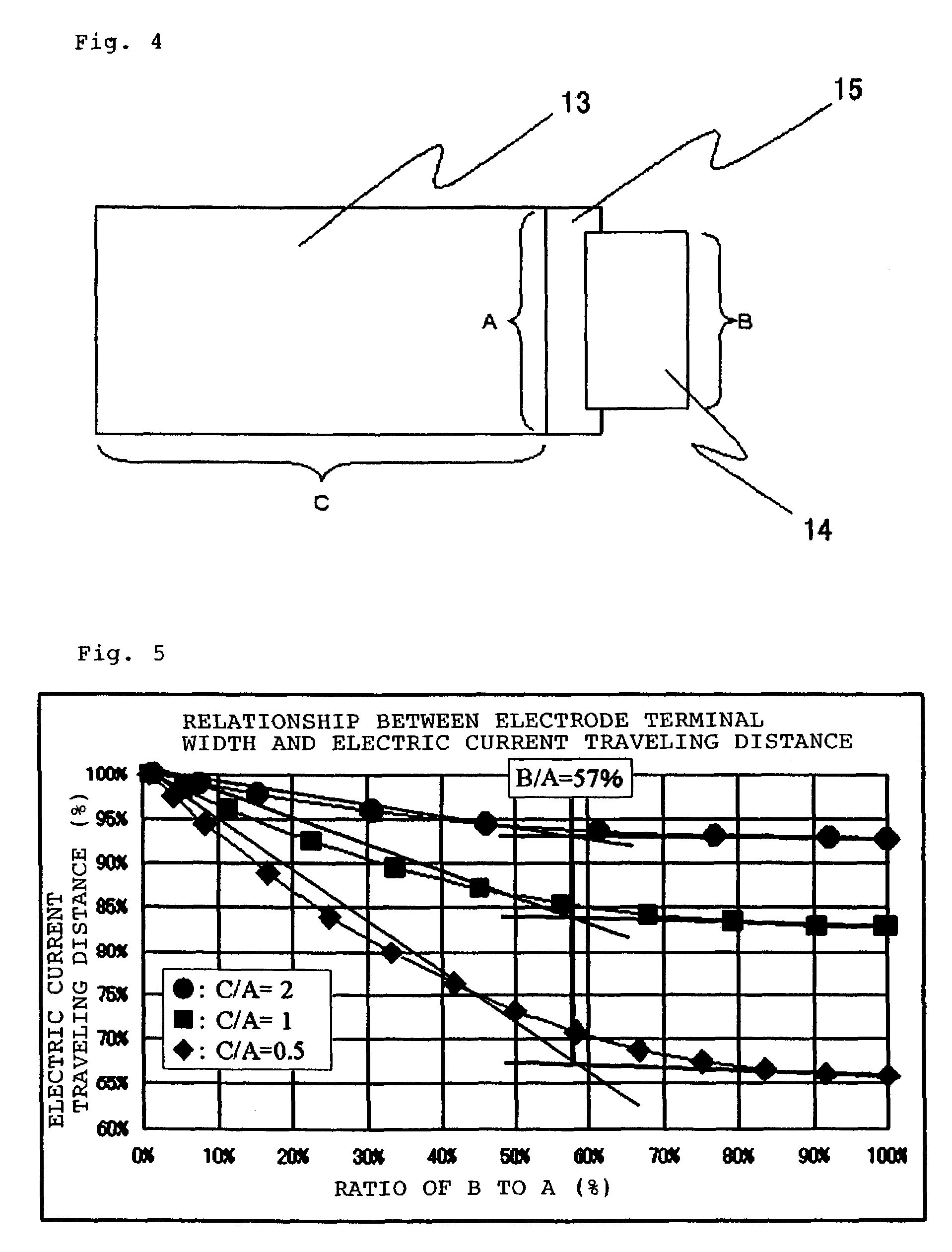Flat-type cell and combined battery utilizing the same
a combined battery and flat-type cell technology, applied in the direction of cell components, flat-type cell grouping, sustainable manufacturing/processing, etc., can solve the problems of reducing reliability, reducing the resistance of the electrode terminal, so as to reduce the resistance of the internal and the electrode terminal. , the effect of effective restriction of heat generation
- Summary
- Abstract
- Description
- Claims
- Application Information
AI Technical Summary
Benefits of technology
Problems solved by technology
Method used
Image
Examples
example 1
[0065]There will be explained hereinafter the present invention in detail based on EXAMPLES.
[0066]As shown in FIGS. 2 and 3, there were alternately laminated: negative electrode bodies 1 each of which comprises a copper foil sheet of a 15 μm thickness coated with hard carbon at a thickness of about 50 μm on both surfaces; positive electrode bodies 2 each of which comprises an aluminum foil sheet of a 20 μm thickness coated with lithium-manganese complex oxide at a thickness of about 70 μm on both surfaces; and laminated type separators 3 each of which comprises an insulative porous resin thin-film sheet of a 25 μm thickness which is in itself constituted by laminating polyethylene films and polypropylene films. As shown in FIG. 3, the negative electrode collecting portions 7 and positive electrode collecting portions 8 were taken out in a manner not overlapping with the laminated electrical energy generating bodies, and the negative electrode collecting portions 7 and positive elect...
example 2
[0067]This EXAMPLE had the same constitution as EXAMPLE 1, except that the width of each of negative electrode terminal 4 and positive electrode terminal 5 was 50 mm. Thus, the values of B / A of the negative electrode and positive electrode were 0.71 and 0.77, respectively.
example 3
[0075]FIG. 8a shows a combined battery constituted by fabricating 3 each of two parallel connected cells, and by thereafter series connecting these cells. This shall be called a “3-series 2-parallel” type, and there shall be called a “Y-series X-parallel” type in case of series connecting Y parts of parallel connected X cells.
[0076]Firstly, there were prepared 3 each of 2-parallel-connection units, each consisting of stacked two cells, then the negative electrode collecting portions 7 and positive electrode collecting portions 8 of pertinent parallel-connection units were mutually connected by such as ultrasonic welding, spot welding or calking. Although there are provided collecting-portion connecting portions 9 for better understanding in FIG. 8a, these portions are the ones connected by welding or calking. The parallel-connection units were eventually stacked in 3 folds as shown in FIG. 8a, thereby obtaining a combined battery of a 3-series 2-parallel / collecting terminal double-s...
PUM
 Login to View More
Login to View More Abstract
Description
Claims
Application Information
 Login to View More
Login to View More - R&D
- Intellectual Property
- Life Sciences
- Materials
- Tech Scout
- Unparalleled Data Quality
- Higher Quality Content
- 60% Fewer Hallucinations
Browse by: Latest US Patents, China's latest patents, Technical Efficacy Thesaurus, Application Domain, Technology Topic, Popular Technical Reports.
© 2025 PatSnap. All rights reserved.Legal|Privacy policy|Modern Slavery Act Transparency Statement|Sitemap|About US| Contact US: help@patsnap.com



